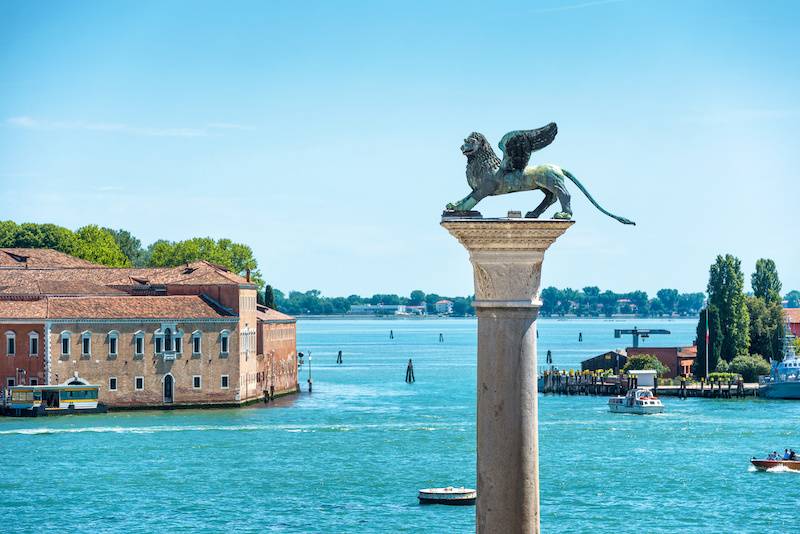Winged Lion Statue in Venice may be Chinese, Study finds

A new study of the trace amounts of lead in Venice's winged lion statue suggests that its metal originated in China.
A bronze statue of a winged lion at the center of Piazza San Marco in Venice is from a China, according to a new study. It was made as a tomb guardian over 1,000 years ago and may have been imported to Italy by Marco Polo's father via the Silk Road in the 13th century, the researchers found.
In the study, published Thursday in the journal Antiquity, Vidale and colleagues identified the source of the bronze used to create the iconic lion, which became an official symbol of Venice in the early 1260s but whose exact origins are murky.
The researchers examined nine samples from different parts of the lion and used mass spectrometry to identify the ratios of lead isotopes in the metal. Metal alloys like bronze — which is a mixture of copper and tin — contain small amounts of lead, the researchers wrote in the study, and the variations in lead atoms can indicate the geological source of the copper.
By comparing the lead isotope ratios from the Venetian lion to worldwide reference databases, the researchers narrowed down the origin of the bronze to the Lower Chang (Yangtze) River in what is now China. This area of East China has large-scale deposits of several important ores.
The Venice lion bearS some similarities to Chinese art of the Tang dynasty (A.D. 618 to 907) — particularly tomb guardians, according to the study. These statues often depicted hybrid creatures with lion-like muzzles and manes, pointed ears, horns and raised wings. The Venice lion has several of these features, as well as metal "scars" where one or two horns may have been removed.
One possible explanation for the Venice lion, the researchers suggested, rests with the Venetian merchants Niccolò and Maffeo Polo, the father and uncle of Marco Polo. In the 13th century, the brothers traversed the Silk Road and set up trading posts, eventually reaching the city known today as Beijing. Perhaps the Polos encountered a "tomb guardian" statue there that fit their notion of what a lion looked like, the researchers proposed.
In the 13th century, when the Republic of Venice controlled eastern trade routes, its symbol was a winged lion resting on water with the gospel of St. Mark, the patron saint of Venice, under its paws. This imagery, which also appeared on the Republic's flag, symbolized Venice's dominance over the seas.
Niccolò and Maffeo Polo may have had the idea of readapting the sculpture into a Winged Lion," the researchers wrote. The brothers may have shipped the statue back to Venice in pieces, trusting a local metalworker to refit it into the symbol now associated with St. Mark.
